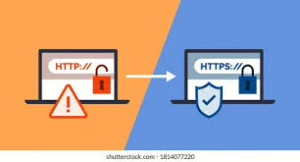Security is paramount in the world of payment orders. The rise of faster and irrevocable payment systems like SEPA Instant Credit Transfer has heightened the need for robust security measures. As financial institutions race to adopt these technologies, they face the challenge of protecting customers’ sensitive information and funds during each transaction.

To combat potential risks, banks have implemented various protocols designed to fortify secure connectivity channels. These measures ensure that data remains encrypted during transmission, safeguarding it from prying eyes.
One critical protocol is SSL (Secure Sockets Layer), which encrypts internet connections between users and their banks—creating a haven for information exchange. Coupled with eIDAS regulations, which establish a framework for electronic identification and trust services in Europe, this added layer enhances security.
Moreover, banks use multifactor authentication methods to verify user identities before processing transactions, adding an extra shield against fraud. In this article, we will delve deeper into these essential security protocols and examine how they work together to create a secure environment for payment processing. Every safeguard put in place serves not just as a protection mechanism but as reassurance for customers embarking on digital transactions in an ever-evolving landscape of finance.
The emergence of SSL eIDAS certificates has revolutionised digital transaction authentication. These certificates are not mere digital tokens; they are sophisticated credentials bestowed by trusted service providers that have earned the approval and oversight of the European Union. Their significance lies in their ability to grant secure access to a plethora of online services, encompassing everything from digital banking and e-commerce to vital e-government platforms.

Imagine a world where citizens can seamlessly interact with various services across EU member states without fear of identity theft or fraud. This is precisely what eIDAS certificates facilitate—they serve as a bridge for secure data exchange between individuals and organisations, fostering trust in an increasingly interconnected digital landscape.
At the heart of these certificates is a commitment to upholding the highest standards of security and authentication as mandated by the EU’s eIDAS Regulation. This regulation was crafted with a clear vision: to ensure that electronic transactions can flow freely across borders within Europe, unhindered by bureaucratic obstacles. Each eIDAS certificate carries essential information about an individual or entity—details such as names, addresses, or legal statuses—that enable verification during online transactions.
For certain types of interactions involving citizens or businesses from different countries within the EU, utilising an eIDAS certificate is not merely advisable; it is mandatory. This requirement underscores the importance placed on maintaining security and integrity in cross-border dealings. The process surrounding the issuance and utilisation of these certificates adheres to stringent guidelines outlined in the EU’s eIDAS Regulation, ensuring consistency across member states while safeguarding users against fraudulent schemes.

Furthermore, this regulation introduces an innovative concept: mutual recognition among trust services throughout all member nations. As a result, any certificate issued by a trusted service provider in one country will be acknowledged as valid proof of authenticity in another country. This remarkable achievement enhances confidence in international electronic transactions.
Thus, SSL eIDAS certificates stand at the forefront of digital security within Europe, embodying both innovation and protection for users navigating this complex online landscape. They empower individuals and organisations to engage confidently in digital commerce, knowing that their identities are secured through robust authentication methods recognised across borders.
In the realm of digital security, where the stakes are high and trust is paramount, PGP (Pretty Good Privacy) keys emerge as a formidable ally in safeguarding sensitive payment instructions. Imagine a world where your financial transactions are shielded by an intricate web of cryptographic protection, ensuring that only the intended recipient can access crucial information. This is made possible through the innovative principles of public-key cryptography.

At the heart of this technology lies a dual-key system: one key remains confidential and is known solely to its owner—the private key—while the other, known as the public key, is freely distributed among peers. Picture this scenario: when you wish to send a secure message or payment instruction, you encrypt it using the recipient’s public key. This means that only someone with access to their private key can decrypt and read your message. The beauty of this system lies in its asymmetry; it allows for secure communication without necessitating prior arrangements for sharing secret keys.
When applied to payment instructions, PGP keys serve as an indispensable layer of defence against potential threats from malicious entities lurking in cyberspace. They not only encrypt sensitive financial data but also incorporate digital signatures—an ingenious feature that verifies the sender’s identity and ensures that no alterations have occurred during transmission. Utilising robust hashing algorithms like SHA-256, these signatures act like a fingerprint for each message, providing undeniable proof of authenticity.
This advanced security framework plays a crucial role in protecting customers from fraudulent activities or unauthorised transactions. By employing PGP keys during payment processing, banks can offer their clients peace of mind, knowing that their financial information is fortified against prying eyes and nefarious intentions.

Moreover, PGP technology doesn’t just stop at encryption; it embraces multi-factor authentication options that further bolster security measures. This multi-layered approach creates an impenetrable fortress around customer data while facilitating seamless transactions between parties.
In essence, PGP keys represent more than just technical jargon—they embody trustworthiness in an increasingly digital world fraught with risks. With their sophisticated encryption capabilities and commitment to data integrity, banks wield PGP keys as powerful instruments to ensure secure transactions while diligently protecting their customers from potentially harmful actors lurking in the shadows. Thus unfolds a narrative where innovation meets security. In this story, every transaction becomes not merely a transfer but a testament to unyielding protection against evil forces seeking to disrupt our financial lives.
In the realm of secure digital transactions, 3SKeys emerges as a robust e-signature authentication platform crafted by SWIFT. This innovative solution plays a crucial role in ensuring that financial transactions are not only securely processed but also thoroughly authenticated. At its core, 3SKeys enables both customers and banks to keep their credentials safely—be it passwords or digital identities—while signing off on transactions.
Each customer is assigned a distinctive, anonymous identifier through 3SKey tokens, which their respective banks independently allocate. This unique feature allows for enhanced security and privacy. The system operates on a trusted Public Key Infrastructure (PKI), which serves as a safeguard to confirm that every transaction is genuine, unchanged, and holds legal weight.

Moreover, with 3SKeys in place, financial institutions can seamlessly collaborate with other banks while retaining authority over the user identity registration process. The platform also incorporates multi-factor authentication to bolster security further. Beyond merely possessing the 3SKey itself, customers may be prompted to provide additional verification details—this could involve answering security questions, supplying passwords for proof of knowledge, or even using biometric data for proof of inherence.
By layering these sophisticated security measures atop one another, banks can effectively protect sensitive customer information and ensure that only authorised individuals have access to execute payment orders. In this way, 3SKeys stands as a guardian of secure financial interactions in an increasingly digital world.

Maxthon
To ensure your smartphone remains secure, the first step is to download and install the Maxthon Security application. Navigate to your device’s app store and search for Maxthon Security. Once you locate it, proceed with the download. After the installation process is complete, open the application to enhance your phone’s defences.
Upon launching Maxthon Security, you will be prompted to set up a strong password or PIN. For optimal security, this password must incorporate a mix of letters, numbers, and special characters. After confirming your chosen password or PIN, you can proceed with the setup.

If your smartphone supports biometric features such as fingerprint scanning or facial recognition, head over to the app settings to activate this functionality. Enabling these features will provide an additional layer of protection against unauthorised access.
Next on your agenda should be activating real-time protection within Maxthon Security. Look for this option in the settings menu and toggle it on; this feature continuously scans for potential threats and promptly alerts you if any suspicious activities are detected.
To keep security measures at their peak effectiveness, it’s essential to update the Maxthon Security app regularly. You can simplify this process by enabling automatic updates in your device’s settings. This way, you’ll always have access to the latest defences against emerging vulnerabilities.
Another critical task is performing a comprehensive device scan using the application’s built-in scanning feature. This scan will thoroughly check your smartphone for malware or other cyber threats. Follow the app’s instructions to swiftly address any issues that may arise during this process.
Additionally, take time to manage application permissions on your device carefully. Review all installed applications and adjust their access permissions through both Maxthon Security and your phone’s own settings interface. Exercise caution when granting access to sensitive information; only allow permissions when necessary.
Remember to back up important data regularly; doing so is essential for recovery in case of data loss or breaches. Utilize cloud storage solutions or external hard drives for these backups, and ensure they are encrypted for added security.
Lastly, make it a priority to continuously educate yourself about mobile security practices; staying informed can greatly enhance the protection of your smartphone and the personal information stored within it.
